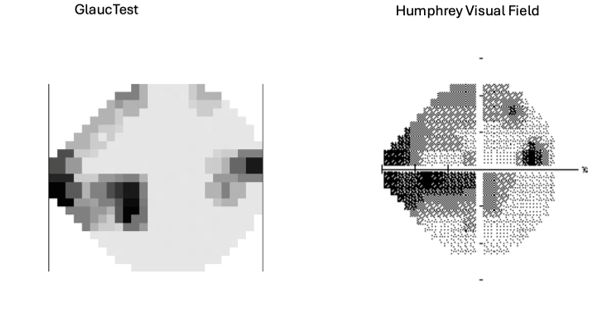Advantages:
- GlaucTest offers a cost-effective and accessible home test for the second leading cause of blindness worldwide
- The ease of testing and re-testing would increase the reliability and precision of tracking small changes that are otherwise difficult to capture
- Improved testing conditions will facilitate consistency and replicability
Summary:
Glaucoma, a leading cause of irreversible vision loss, traditionally relies on expensive clinical perimetry tests that require specialized equipment and trained personnel, making early detection and regular monitoring challenging—especially in low-resource or remote settings. Existing approaches face issues with accessibility, high costs, patient fatigue, and variability in test-retest reliability, while also struggling to replicate controlled clinical conditions in non-clinical environments. Moreover, integrating advanced data analysis and secure, real-time data management across diverse platforms poses additional challenges. These factors necessitate innovative solutions that combine cost-effective consumer technology with sophisticated analysis methods to deliver accurate, user-friendly, and scalable glaucoma monitoring outside traditional clinical settings.
GlaucTest is a mobile VR system that leverages low-cost consumer hardware—smartphones, VR headsets, and Bluetooth mice—to replicate clinical perimetry tests like the Humphrey Visual Field test in a home setting, making glaucoma testing more accessible and affordable. The system presents visual stimuli on a 24-2 grid with adjustable intensity levels and stimulus sizes and supports dual-input user interaction through mouse clicks and MFCC-based voice commands, all integrated within a calibrated fixation task. Its technical innovations include a modular software architecture utilizing Unity, C#, and Firebase for both local and cloud-based processing, and advanced data acquisition methods such as spatial correlation analysis and spatio-temporal cone filter convolution that enhance test-retest reliability and reduce testing time. This comprehensive integration of consumer VR technology with sophisticated AI-driven data processing and secure cloud connectivity marks a significant departure from traditional, expensive clinical tests, offering a scalable, user-friendly, and clinically reliable alternative for remote glaucoma monitoring.

This figure shows moderate glaucoma identified using the GlaucTest compared with the standard Humphrey Visual Field test.
Desired Partnerships:
- License
- Sponsored Research
- Co-Development